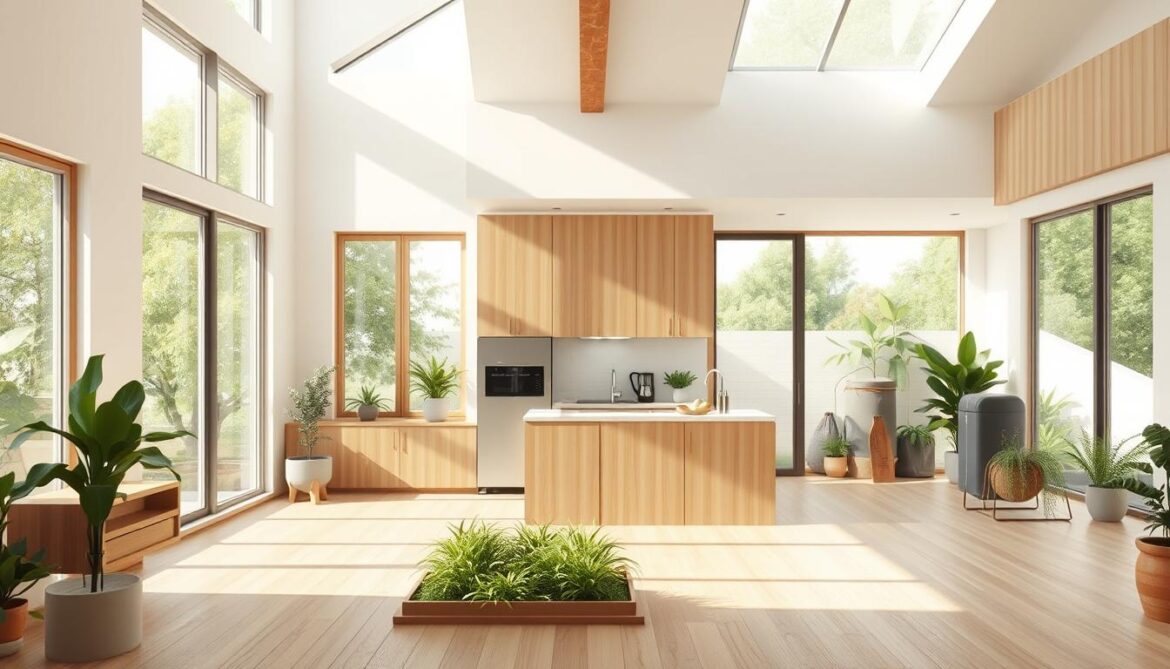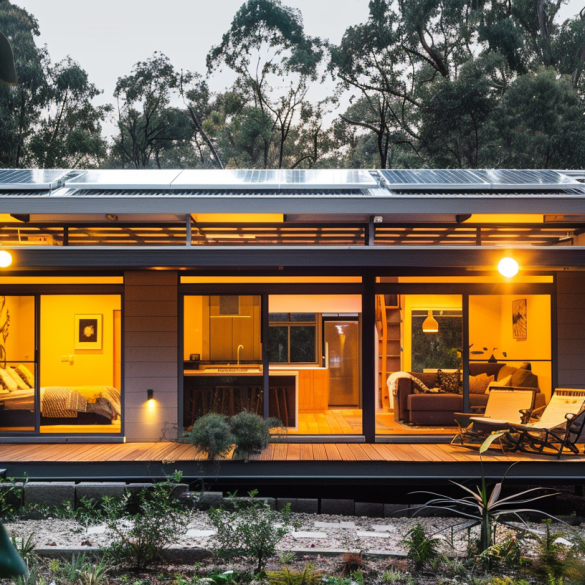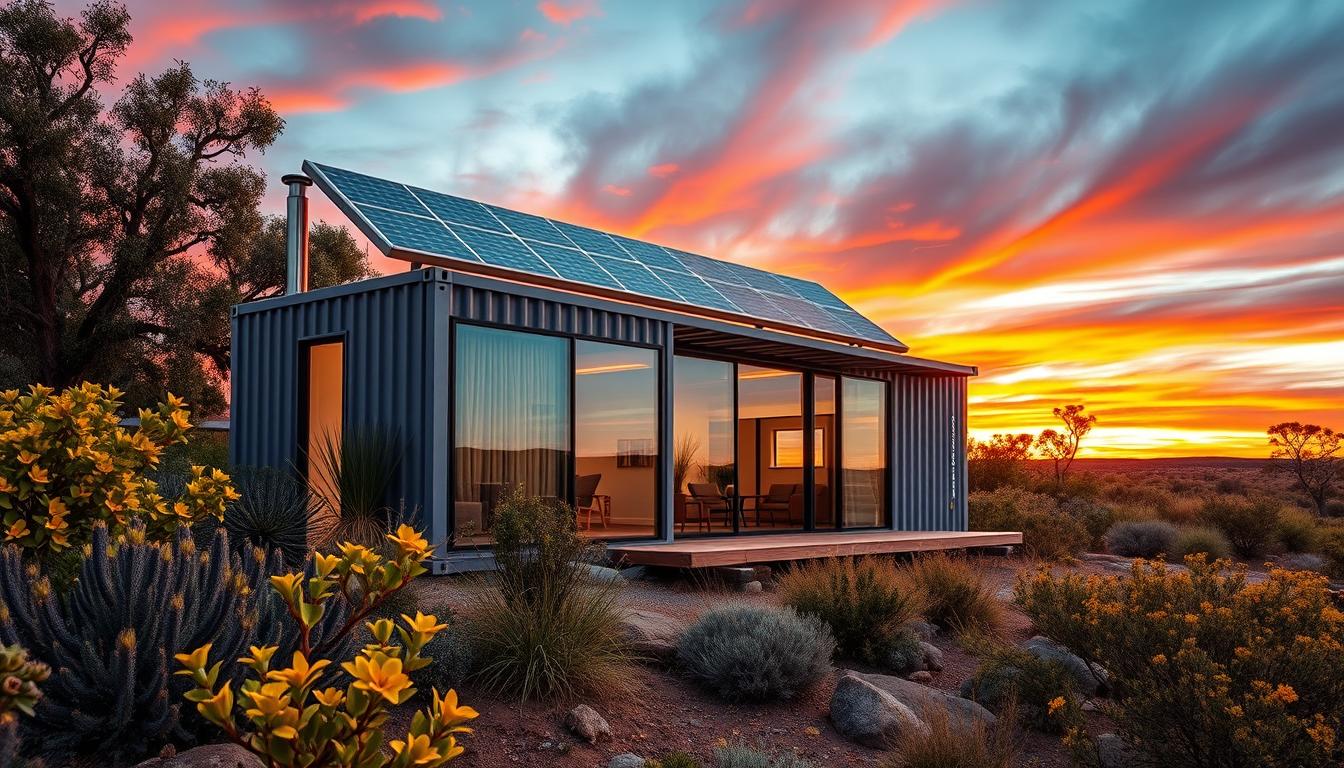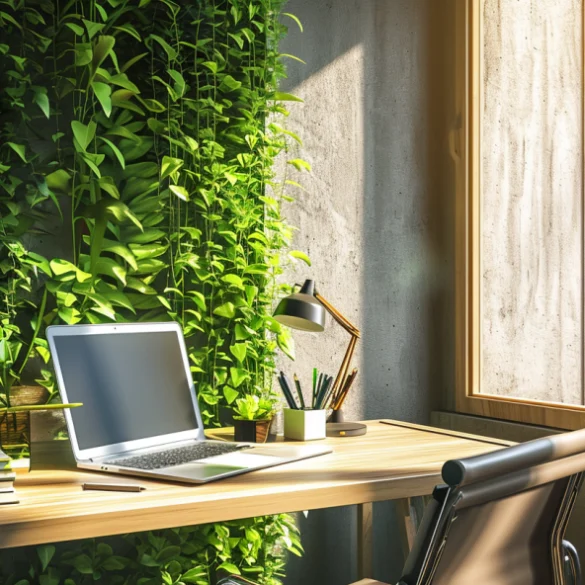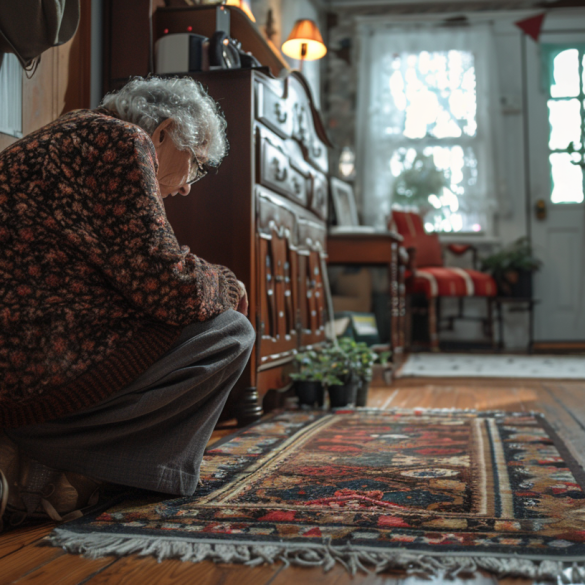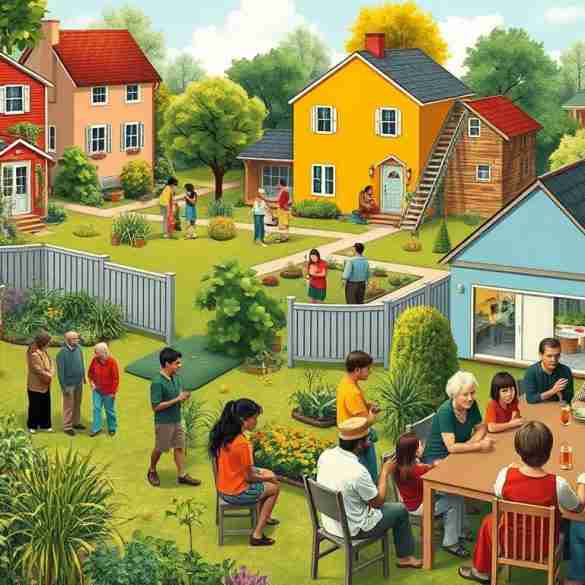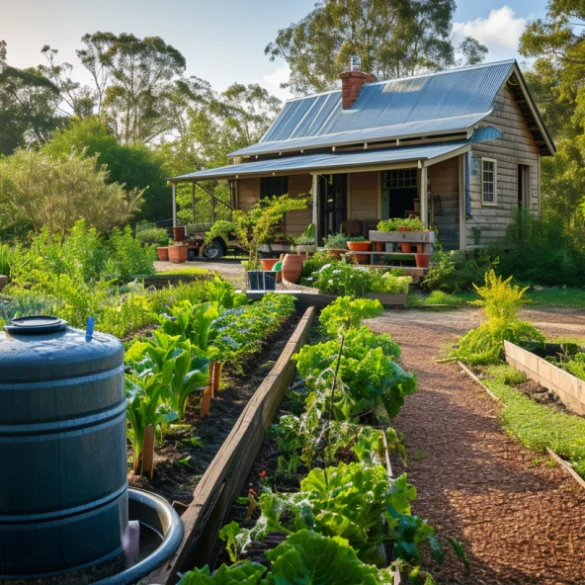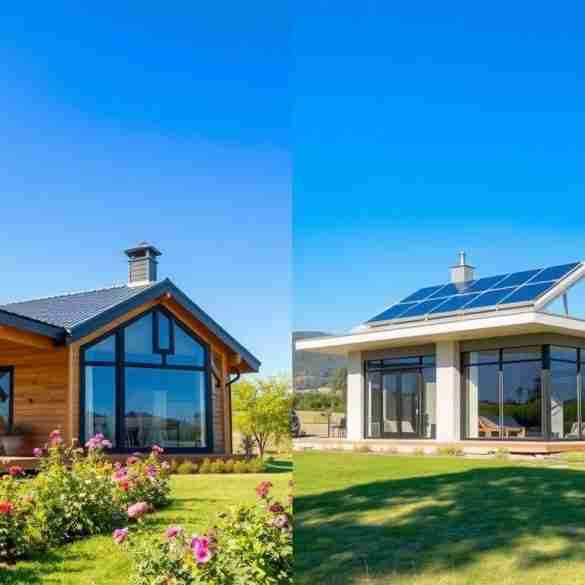
Ever thought about how your home could help the planet? Making your home eco-friendly is all about small, thoughtful changes. This guide will show you how to make each room in your house greener.
Every little bit helps, as Sustainable Home Magazine readers know. You can make your home more energy-efficient, from the kitchen to your bedroom. This approach not only helps the environment but also makes your home healthier and more mindful.
Start your journey to a greener home today. By making smart changes in each room, you’ll help the planet and maybe even save money on bills. Let’s see how you can turn your home into a sustainable haven, one room at a time.
Key Takeaways
- Sustainability is achievable through mindful, room-specific strategies
- Small changes can significantly reduce your environmental impact
- Green living can lead to potential cost savings
- Every room offers unique opportunities for eco-friendly improvements
- Creating a sustainable home is a gradual, rewarding process
Introduction to Sustainable Living at Home

Living sustainably at home is more than a trend. It’s a lifestyle choice that helps both you and the planet. It turns your home into a green sanctuary where you reduce waste and save energy every day.
Starting your sustainable journey means learning about green renovation. By choosing wisely, you can lessen your impact on the environment. You also make your home a healthier place to live.
The Importance of Sustainable Homes
Sustainable homes are key to solving environmental problems. They use less resources and waste less by design. They focus on:
- Lowering carbon emissions
- Using less energy
- Protecting nature
- Keeping air inside clean
Key Benefits of an Eco-Friendly Household
Choosing eco-friendly decor and habits has many benefits:
- Lower utility bills with energy-saving tech
- Better air quality inside
- Less harm to the environment
- Higher home value
Simple Steps to Get Started
Switching to a sustainable home doesn’t need big spending. Small, smart changes can greatly reduce waste and save energy.
The Sustainable Home Magazine suggests starting with easy changes for big environmental wins.
Understanding Energy Efficiency and Waste Reduction
Being energy-efficient means using less power wisely. Choices like LED lights and good insulation help make your home greener.
Reducing waste can also cut your home’s environmental impact. Try composting, recycling, and picking products with less packaging to live more sustainably.
Sustainable Kitchen Upgrades
Your kitchen is a key place for living zero-waste. By choosing wisely, you can make it a green space. It will help the planet and save you money too.

Energy-Efficient Appliances
Choosing the right appliances can really cut down your energy use. Look for appliances with the ENERGY STAR label. They use less power but still work great.
- Refrigerators with advanced insulation technology
- Induction cooktops with precise temperature control
- Dishwashers with water-saving cycles
Reducing Food Waste and Composting
Composting turns kitchen waste into soil. It’s a green way to deal with organic trash. Start small by composting vegetable peels, coffee grounds, and eggshells.
| Compostable Items | Non-Compostable Items |
|---|---|
| Fruit and vegetable scraps | Meat products |
| Coffee grounds | Dairy products |
| Eggshells | Processed foods |
Eco-Friendly Cookware and Utensils
Choose sustainable materials for your kitchen tools. Cast iron skillets, bamboo cutting boards, and stainless steel utensils are durable and eco-friendly. They last longer than disposable items.
Sustainable Grocery Shopping and Storage
Reduce packaging waste by using reusable bags and buying in bulk. Store food in glass containers. Buying local and seasonal produce cuts down on emissions and supports local farmers.
Greener Bathroom Practices
Turning your bathroom into an eco-friendly space is simpler than you might think. By using smart water-saving tips and picking non-toxic cleaners, you can make a green sanctuary. This will help your home and the planet.

Water-Saving Fixtures and Techniques
Start saving water with the right fixtures. Low-flow showerheads and dual-flush toilets cut down water use a lot. Here are some tips:
- Install aerators on faucets to reduce water flow
- Fix leaky pipes and faucets right away
- Collect shower warm-up water for plants
Non-Toxic Cleaning Solutions
Get rid of harsh chemicals for better health and the planet. Natural cleaners work great:
| Natural Cleaner | Usage |
|---|---|
| Vinegar-Water Solution | Disinfect surfaces and remove soap scum |
| Baking Soda | Scrub tough bathroom stains |
| Microfiber Cloths | Replace disposable cleaning wipes |
Reducing Single-Use Plastics
Your bathroom uses a lot of plastic. Choose reusable alternatives like bamboo toothbrushes and refillable soap dispensers. Also, pick products with recyclable packaging.
Energy-Efficient Lighting and Ventilation
Use natural light and LED bulbs to save energy. Also, get energy-saving exhaust fans with humidity sensors. They help with ventilation without using too much electricity.
Creating an Eco-Friendly Bedroom

Turning your bedroom into a green space needs careful thought and planning. It can become a place that’s good for you and the planet.
Sustainable Furnishings Selection
Choose furniture that’s kind to the earth. Look for pieces made from:
- Reclaimed wood
- Bamboo
- Recycled metal
- Certified organic materials
Improving Indoor Air Quality
Good air quality is more than just opening windows. Add natural air cleaners like:
- Snake plants
- Spider plants
- Peace lilies
- Activated charcoal filters
Energy Efficiency Strategies
Make your bedroom energy-smart. Use smart heating and cooling. Try thermal curtains, energy-efficient windows, and keep the temperature steady.
*”A sustainable bedroom is not just about design, but about creating a healthier living environment.”*
Decluttering and Recycling
Go for less stuff by recycling wisely. Give away what you can, reuse old items, and recycle electronics. This helps the planet and supports a green economy.
Making Your Living Room More Sustainable
Turning your living room into an eco-friendly space is a great way to support the environment and your health. You can make it a green model by choosing materials, electronics, and decor that are kind to the planet.
Embracing Sustainable Materials
Choosing sustainable materials for your furniture is key. Here are some good options:
- Reclaimed wood furniture from local salvage yards
- Bamboo coffee tables and shelving units
- Recycled metal accent pieces
- Furniture made from responsibly harvested timber
Energy-Efficient Lighting Solutions
Smart lighting choices can cut down on energy use. LED bulbs use up to 75% less energy than old incandescent bulbs. Smart systems adjust light levels and turn off when no one’s around.
Eco-Friendly Home Decor
Enhance your living room’s look with green decor. Look for:
- Non-toxic, low-VOC paints
- Organic cotton or hemp throw pillows
- Natural fiber area rugs
- Art made from recycled materials
Improving Indoor Air Quality
Houseplants are great for cleaning the air. Snake plants, spider plants, and peace lilies are top picks for removing toxins and adding greenery.
Transform your living room into an eco-friendly haven that reflects your commitment to sustainability and personal well-being.
Sustainable Laundry Room Practices
Your laundry room is a great place to make your home more eco-friendly. By using smart strategies, you can turn this space into a green powerhouse. It will save resources and help the planet.
Energy and Water-Efficient Washing Machines
Choosing energy-efficient appliances is key to lowering your carbon footprint. Look for washing machines with the ENERGY STAR label. These machines use up to 25% less energy than regular ones.
They also use less water and electricity. This helps you save water and cut down on energy costs.
- Choose front-loading washers for maximum efficiency
- Select machines with multiple water level settings
- Opt for models with eco-friendly wash cycles
Eco-Friendly Detergents and Drying Methods
Traditional laundry products can harm the environment. Switch to plant-based, biodegradable detergents. They are gentle on clothes and the planet.
Air drying is the most eco-friendly way to dry clothes. It uses less energy and makes clothes last longer.
Proper Clothing Recycling and Upcycling
Textile waste is a big problem. Donate gently used clothes or upcycle old ones. Upcycling can give old clothes a new life and reduce waste.
- Donate clean, wearable clothing to local shelters
- Cut old t-shirts into cleaning rags
- Transform worn jeans into tote bags
Reducing Microplastic Pollution from Clothes
Synthetic clothes release microplastics when washed. Use washing bags to catch these tiny particles. Also, choose natural fiber clothes and wash synthetic ones less often.
Greening Your Home Office
Turning your home office into an eco-friendly space makes it a place of both work and green living. With smart eco-friendly upgrades, you can create a space that’s good for the planet and boosts your productivity.
Sustainable Office Supplies and Furniture
Choose office furniture that’s good for the earth. Look for pieces made from:
- Recycled materials
- Bamboo or reclaimed wood
- Certified sustainable forest products
- Ergonomic designs with minimal environmental impact
Digital Alternatives to Paper
Go digital to cut down on paper use. Cloud storage and digital note apps can greatly reduce paper waste. Use electronic signatures, digital documents, and online tools to make your work flow smoother.
Reducing Electricity Consumption
Make your home office more energy-efficient with these tips:
- Use LED lighting
- Install smart power strips
- Choose energy-star rated electronics
- Enable power-saving modes on devices
Indoor Plants for Productivity and Clean Air
Improve your air quality with air-purifying plants. Plants like snake plants, spider plants, and peace lilies not only look good but also clean the air. They can also make you feel better, reduce stress, and help you work better.
Eco-Conscious Outdoor and Garden Spaces
Turning your outdoor areas into green spaces needs careful planning and new ideas. Your garden can be a key part of making your home eco-friendly. It can be both beautiful and good for the planet.
Organic gardening is a complete way to make your outdoor spaces lively and healthy. By using natural ways to grow plants, you can make a thriving garden in your backyard.
Organic Gardening and Composting
- Create rich soil through home composting
- Select native plant species for better adaptation
- Use natural fertilizers to support plant growth
- Implement companion planting techniques
Water Conservation Techniques for Landscaping
Smart water-saving methods can cut down your water use outside. Here are some tips:
- Install drip irrigation systems
- Choose drought-resistant plants
- Collect rainwater for garden use
- Mulch garden beds to retain moisture
Natural Pest Control Methods
Keep your garden safe from pests without using harmful chemicals. Beneficial insects and planting plants together can keep your garden balanced.
Solar Panels and Renewable Energy Sources
Adding renewable energy to your outdoor spaces can lower your carbon footprint. New roofing options like artificial thatch last 50 years and are eco-friendly for powering your outdoor areas.
Your outdoor space can be both beautiful and environmentally responsible.
Sustainable Practices for Home Renovations
Turning your home into an eco-friendly space needs careful planning and smart choices. Home renovations are a great chance to add sustainable materials and improve energy use.
Selecting Sustainable Building Materials
When you start your renovation, choose materials that are good for the planet. Here are some options:
- Locally sourced stone and wood
- Recycled metal and glass components
- Reclaimed timber from responsible sources
- Low-carbon concrete alternatives
Energy-Efficient Windows and Insulation
Improving your home’s energy use is key. Look for windows with extra glazing and insulation that keeps heat in or out.
Eco-Friendly Flooring and Paint Selection
Pick flooring and paint that are good for indoor air and the planet. Bamboo flooring, cork, and recycled tile are better than usual materials.
Smart Home Technology for Sustainability
Use smart home tech to save energy. It can control lights, temperature, and water use easily.
- Smart thermostats for precise climate control
- Automated lighting systems
- Energy monitoring devices
- Water-saving smart irrigation controllers
With these green renovation tips, you can make your home more eco-friendly. It will use less energy, be better for the planet, and still be stylish and comfortable.
Waste Management and Recycling at Home
Turning your home into a zero waste space needs smart recycling and upcycling. Every home can lessen its environmental impact with good waste management. Learning to sort, recycle, and reuse items greatly cuts down your carbon footprint. It helps in living sustainably.
Recycling is more than just sorting plastics and paper. It’s about creatively using household items. Places like Goodwill show this by turning old clothes into cleaning rags or sending useful items abroad. By giving away gently used items and buying secondhand, you cut down on textile waste. You also support fair shopping habits.
Composting is another key way to reduce waste. Food waste in landfills creates methane, which is 25 times worse than carbon dioxide. But, composting at home turns kitchen scraps into soil full of nutrients. Machines can handle up to 125 kilos of organic waste daily. This cuts waste by 90% and can save 400 kilos of carbon emissions.
For more tips on managing waste sustainably, check out Sustainable Home Magazine (https://sustainablehomemag.com). They offer expert advice on recycling, upcycling, and composting. Their resources can help you set up effective recycling systems and learn how to reuse items in your home.

